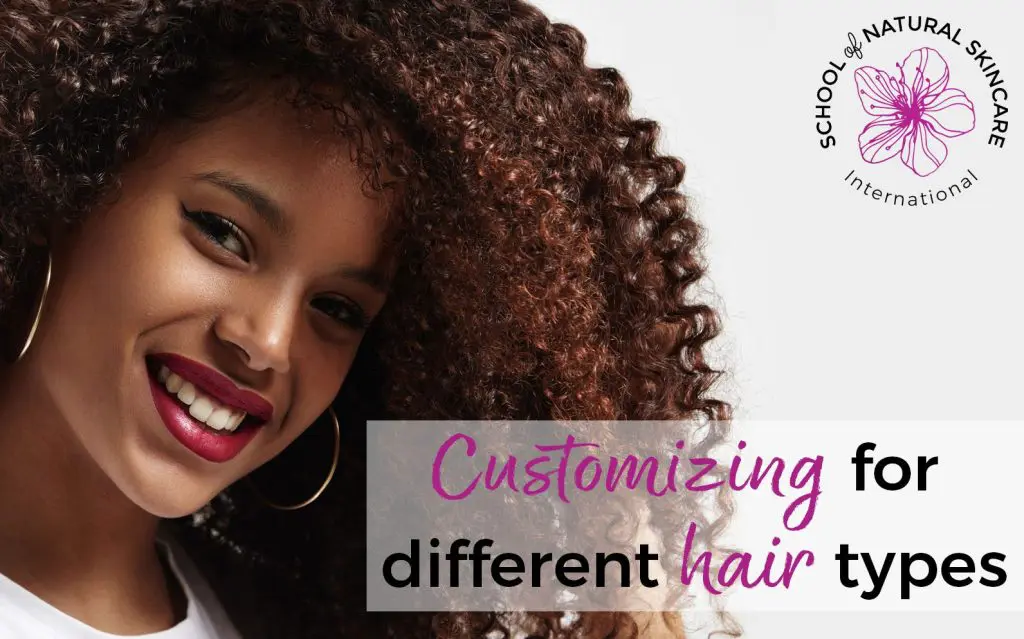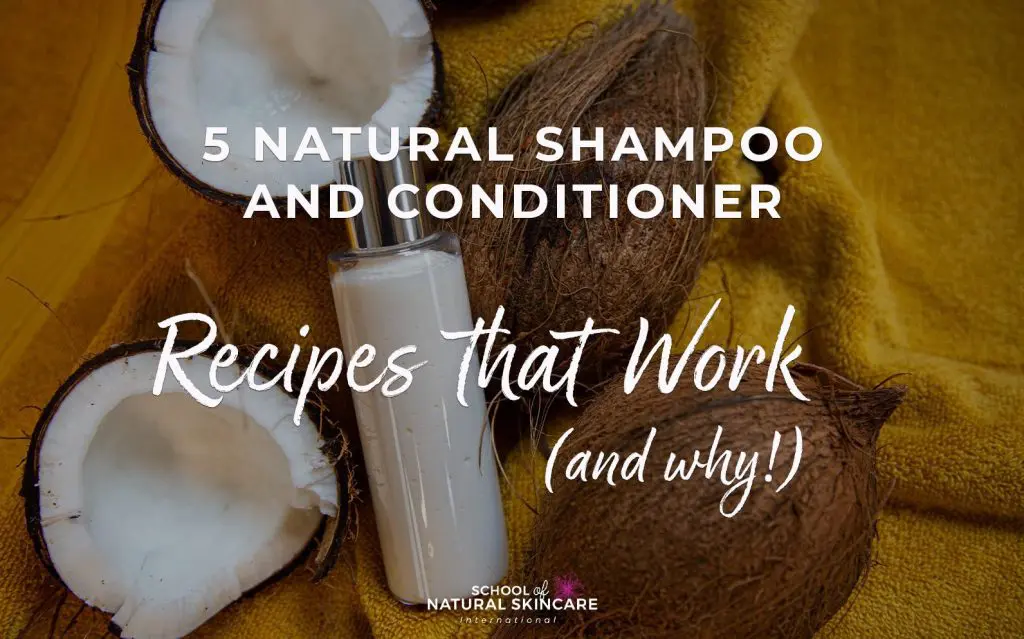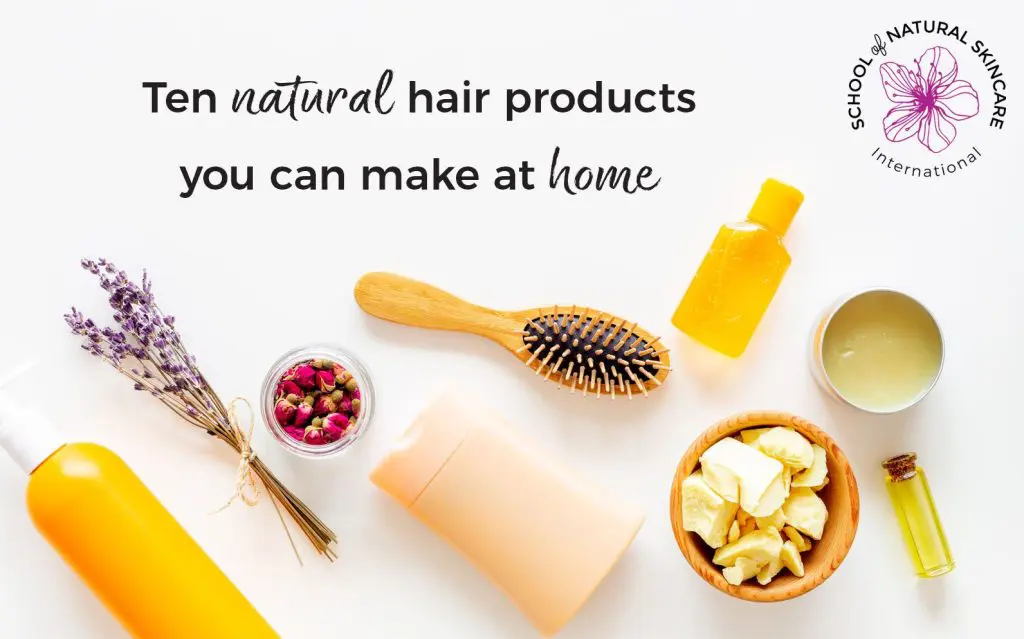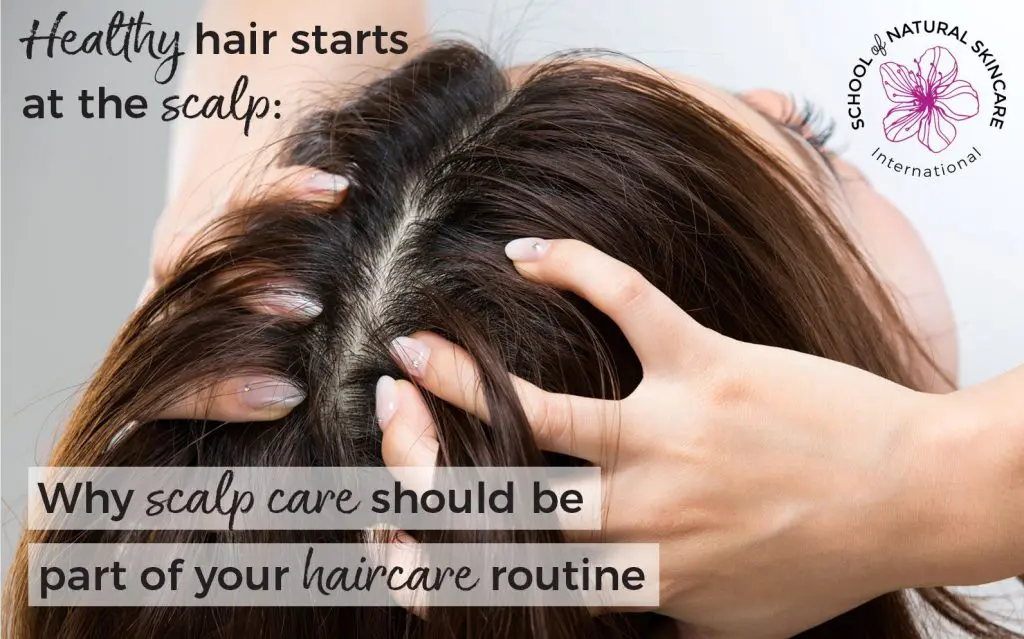Starting with base recipes can be a good way to learn how to make haircare items like shampoo, conditioner, and treatments, but if you want to increase your skills and meet your customers’ needs, you might want to consider learning how to formulate for different hair types.
In fact, the most common types of questions we receive from our students who are interested in formulating haircare products has to do with the specific needs and challenges for different ethnic hair types. We’ve heard everything from students who wish to control the oil and shine in their straight, thick, Asian hair, to students who are endlessly searching for the perfect curl-defining, moisturizing product for their Afro-textured hair.
We absolutely hear you!
Even more so than skincare, haircare is not a one-size-fits-all product. Just try applying a deep shea moisture creme to someone with fine, wispy, Caucasian hair. Understanding why this is—why different products, and different ingredients, function either poorly or well on different hair types—has to do with the characteristics of that hair type.
So, what does a hair type mean?

Key Characteristics of Different Hair Types
There are several ways to classify different types of hair:
- It can be classified according to oiliness or dryness, which is the most commonly used type of classification on most commercial haircare products. Think of the shelves at the store, with products for oily hair, dry hair, etc.
- It can be classified according to curliness: Straight, Wavy, Curly, or Kinky. This also is used sometimes on product labels.
- Hair can also be categorized according to ethnicity: Asian, African, and Caucasian being the primary, but not only types. This tends to be the most common classification in scientific literature.
To some extent, all of these classifications go hand in hand with hair follicle anatomy. Asian hair tends to be straight, with a cross-section that is mostly round; Caucasian hair can be straight, wavy, and curly, with a cross-section that is mostly round to oval; and Afro-textured hair tends to be curly and kinky, with the flattest oval cross-section.

Afro-textured hair
Because Afro-textured hair tends to have the flattest cross-section, that means it is often the most prone to breakage. And, because the oils from the scalp can’t travel as easily down the hair shaft, due to the degree of curliness of kinkiness, the scalp can end up more oily, while the hair can be very dry.
To address this combination of unique challenges, Afro-textured hair usually likes pre-wash oil treatments, and haircare products that contain oils, other emollients and cationic ingredients (but not humectants which can actually damage Afro-textured hair). People with Afro-textured hair often follow the CO-wash method, where CO stands for Conditioner Only; they skip the shampoo entirely, and just use a conditioner in their washing routine.
Asian hair
Within the broad category of Asian hair, there are several different subtypes. It can be slick and straight, frizzy and fine, or even thick and heavy. The one thing that the majority of Asian hair types do have in common, however, is that compared to Caucasian hair, the cuticle layer is thicker, and the cuticles themselves are inclined in a steeper angle. These cuticles are laid out like overlapping plates on each strand of hair, and they form a barrier that seals in moisture. The flip side of this is that a thicker cuticle layer can also mean a much more difficult time getting penetration into the hair shaft—and this can mean anything from hair dye that doesn’t take to other chemical treatments.

Caucasian hair
Caucasian hair can be anywhere from wavy to stick-straight, and can be fine, medium, or thick, as well. It can be next to impossible to formulate a product that works perfectly for this wide variety of hair types and needs, but you can begin to narrow down your focus to specific issues, even within a certain hair type.
Formulating for Different Hair Types
- The straighter the hair, the more easily the natural oils can travel down the shaft. Because of this, products for straight hair—especially fine or thin straight hair—don’t need an abundance of heavy ingredients like oil, butters and cationic emulsifiers.
- Frizzy hair gets worse in high humid environments so adding lots of humectants in a product is not a good idea.
- Thinning hair—hair with low density of hair fibers per area of scalp as a result of baldness or other type of hair loss—is usually treated with prescription drugs, but some herbal ingredients, essential oils, and botanical extracts can help stimulate hair follicles and encourage hair growth.
- Fine hair describes hair with low diameter of hair fibre cross section, while thick hair literally has a larger sized strand. Fine hair can easily be weighed down by rich products with lots of oils and butters, so it needs a lighter conditioner, preferably containing some hydrolyzed protein to add volume.
- Thicker hair is stronger and more resistant to damage, but it also resists styling. It loves having humectants to bring in moisture.
- Oiliness/dryness will have an impact in choosing ingredients. For example: dry hair needs gentler products with mild surfactants and lower cleansing ability, while oily hair will usually benefit from slightly more cleansing shampoos. When it comes to conditioners, oily hair won’t tolerate conditioners with a high oil content, but dry hair will.
- We explain more about formulating for Afro-textured hair types in this article: Creating nourishing products for Afro-textured hair
As you begin to build your formulation knowledge—and as you receive that crucial feedback from your customers and product testers—you’ll be able to adapt and fine-tune your formulations to appeal to many different hair types.
Source:
https://www.ncbi.nlm.nih.gov/pubmed/16957811
Free Training
Become a Natural Haircare Formulator
There are so many myths and mistakes online about haircare formulation—many of which can actually damage your hair.
Learn the professional way to formulate natural and organic haircare products with our free email training series.
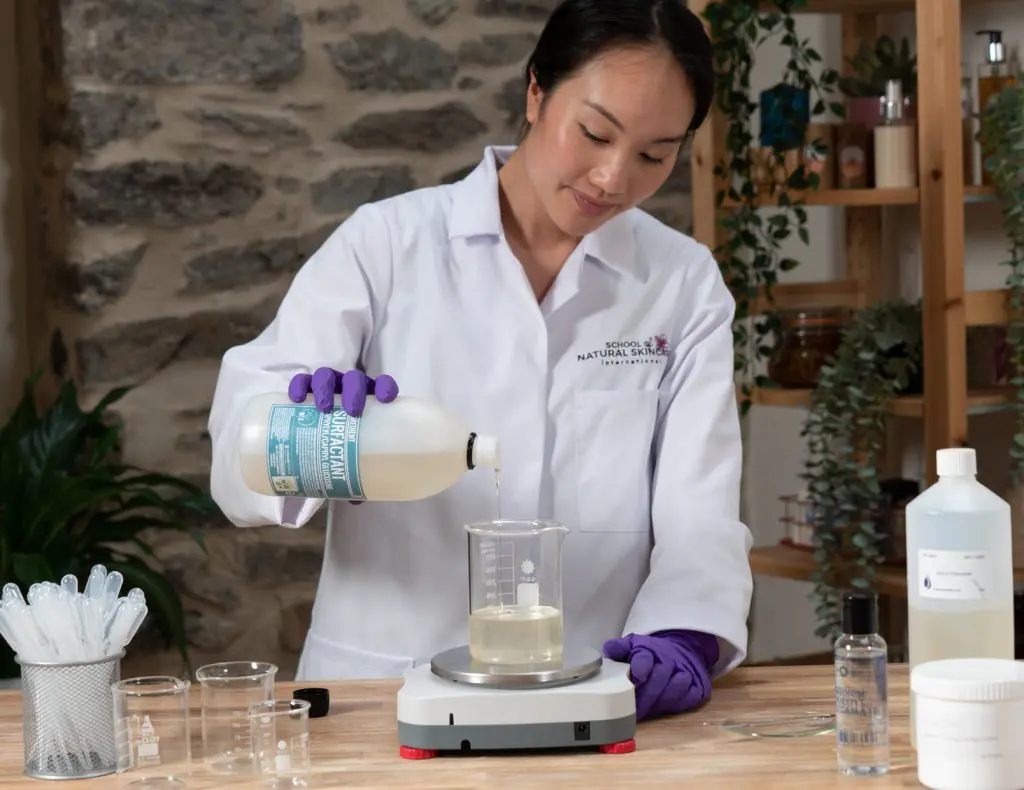
Exclusive for our newsletter subscribers. Sign up now!
We look after your data in accordance with our privacy policy.
What you’ll learn:
- The essential ingredient you must include in a shampoo.
- Five natural shampoo recipes that won’t work and why.
- How to avoid SLS – and gentle, natural alternatives.
- The difference between making haircare products and skincare products.
- How NOT to make your own shampoo and conditioner bars.
Exclusive for our newsletter subscribers. Sign up now!
